
Horseytalk.net/Hoofbeat
RIDER RIGHTS
The Odiham Common Management plan
Beware. It is an indirect push for fencing and grazing as well as such activities as coppicing, says Bob Milton
What is your opinion of the Management Plan ?
It is only by working together that we can help each other
The story of the fight to save Odiham Common click here
Bob Milton dissects the plan to see whether it is pro-rider or anti-rider
P1. Whilst sensitive management is crucial to maintain the character of the common as people know it the implication of 'matching traditional activities' is uncalled for as the common has changed from the everyday uses by the lord of the manor and his peasants and villeins. This is an indirect push for fencing and grazing as well as such activities as coppicing.
P2 Again the references to centuries old traditions are not relevant as it is what is best for the common now The dominant tenement for management is public recreation with regard to its SSSI status and not the other way around There never was any wood pasture as such for commoners. It has continently been stated and been ignored by the historians who follow the dictates of those with a focused environmental interest on the site. The SSSI citation is wrong and as such was accepted by the Inspector in 2003. There is no evidence of wood pasture grazing by commoners prior to the 1938 dedication. The only evidence of grazing is on the southern meadows after hay was cut. It was too wet to graze all the year around and was required for hunting of deer. That was the prime direction for any management over the previous few centuries.
The reason for chopping the mature oaks after the first public inquiry was purely financial and nothing to do with heathland regeneration as no formal survey was ever carried out as to where heathland had been in the distant past. The only heathland appears under the pylon line and is a result of constant mowing of scrub which changed the surface habitat.
P3 The research paper referred to is not definitive or peer reviewed and is selective in its findings many of which are not based on actual evidence from the common.
Given that s193 LPA 1925 gives the rights to 'air and exercise' only to according to LJ Sullivan in ex parte Billson 1998 to pedestrians and equestrians it is concerning not to see a representative of equestrians on the advisory panel especially as the British Horse Society Hampshire has its own specialist advisor. It is also odd that the National Trust has a seat when it has no legal interest in the common being only a landowner and not even representing all the landowners on or adjacent to the common.
P7 Legal back ground Common land: Whilst it is correct to say that the common was mapped during the CROW 2000 process it is excluded from all provisions including open access. Again it is correct only to say there are no bridleways recorded on the Definitive Map and Statement under the National Parks and Access to the Countryside Act 1949[as amended]. The s193 deed is the dominant tenement for all works and management.
Scheme of Regulation: It is important to remember that the Scheme give the local authority whether it owns the common or not the power to manage the land and spend what is in effect public money. What it cannot enable is the removal or restriction of public or private rights by bylaws as it applies to nuisance and the preservation of order only under the provisions of the scheme.
SSSI.: Here again it is important to remember that Schedule 9 s28G(2) CROW 2000 sets out the saving for the authority as land owner where as here the authority's function and dominant tenement is public recreation. "(2) The duty is to take reasonable steps, consistent with the proper exercise of the authority's functions, ..etc."
The description in the management plan confuses the general duty in s28G(1) with the saving in S28G(2). The assessments and direction for management has been pushed by Natural England [formally English Nature] targets which are now abandoned and the wrong designation as wood pasture which the Council has meekly accepted rather than challenge in the light of the 2003 public inquiry.
Ancient woodland: This designation did not stop the common management after the first inquiry and fencing consent removing some 70 mature oaks.
P8 It is the Aarhus Convention that dictates public consultation when implementing Eu derived legislation.
P11 The vision statement completely misses out the words public recreation and the primary duty to its protection and provision.
P15 5. Action Plan
A Protecting the commons designated status: There is misinformation as to the equestrian issue. The Scheme of Regulation has no powers to restrict riders rights under s193. There is confusion as to the difference between tracks used by pedestrians as a result of their rights under s193, the rights to pass and re-pass on public rights of way be they footpaths or any other form of way [Highways Act 1980] and the duty to hold and manage the common for public recreation. Remembering at all times that cycling is illegal on the common [s193] and on footpaths [both s34 RTA 1988] but would not if there was only a Scheme of Regulations and it was so designated.
The Commons Act 2006 only applies to enforcement since July 2005. all previous enforcement must be considered under s194 but the obvious candidates have not been carried out in a timely fashion. Where land through prescriptive acquisition and unlawful fencing has been now registered or not as the case may be at the land registry the Scheme of Regulation still applies over all of the land whether in the councils ownership or not. It is therefore possible to act unilaterally and remove all unlawful barriers to public recreation and access who so ever erected them [seeA5 action]
A4 Actions does not seem to be complete as you still have misleading information in the plan C. Conserving the commons landscape qualities:
C2 The pylons and the management of the land under by the statutory authority is the only reason the heather is there. Any proposal for under grounding will be hideously expensive and destroy the habitat that is sort to conserve.
C3 The Lombardy poplars have been there since the just after the war and are part of the landscape why are they considered to be any more incongruent than other some of the other non native trees on the common.
C7 When historical did the common have oak pollards across its whole area? Where is the evidence?
D. Biodiversity:
It is important and imperative to be sufficiently flexible in scrub clearance so as not to expose those private dwellings on the common to invasion by deer, to the cost of re-fencing their property, or exposing them to insecurity both visually or physically without their full support.
No actual evidence of major grazing on the common in the 20th century has ever been produced. Minor tethered grazing after WWII was seen on the southern meadow. One cow in living memory does not constitute a general grazing regime of the common and the southern meadows in particular. It should be remembered that since 1958 the use of common land for dairy cattle grazing was banned by the milk marketing board on the grounds of health risk. So that what we see is different from the minority use of some of the land eg the southern meadows seen earlier in the century. Even then grazing always gave way to hay production. It is the use as hay that the southern meadows should be majored on
D8 The continuing revisiting of wood pasture grazing is divisive in the community and should be scrapped unless clear historical evidence of its extent and type is produced immediately.
Wetland: The experience and destruction of the common as a result of the canal works has resulted in a substantial area of changed habitat and loss of public recreation. Do not repeat the same desecration. My experience is that timing is crucial for these works and the window of opportunity is normally only 6-8 weeks in any one year with restoration work being carried out in year two or even three depending on the weather during the summer.
Southern Meadows:
These wet lands would not have been grazed in the spring
if they were to be cut for hay as the ground would be too wet and cold to
bring on a sufficiently early bite for cattle. Again my experience is that
it could only be sheep that could take advantage of any early growth without
damaging the ground. Even then they would be off by mid April when the first
major flush starts. Hay would be made by the end of august with daily herded
grazing of the milking cows commencing then. On the southern heathlands it
was not the practice as here to make hay. This was peculiar to those commons
which are clay based such as here and Effingham in Surrey.
E Identity:
Again please remember that the common goes right up to the
metalled highway. There is no highway verge except where the highway
authority has acquired the land from the common for the access off the
bypass.
There has been no consent for any highway take for footways [pavements]. The Highway authority has the mistaken believe that clear view mean faster traffic. This is not the case as can be seen on many of the best grazed commons.
F. F3 A lack of communication with adjacent landowners has been noticeable over the years and in respect to this management plan. It is important to negotiate not dictate how works on the common will impact on the boundary of their properties. This applies as much to the re-establishment of the ownership boundary of HDC as to the visual effect from both sides of the boundary and perceived security requirements. F4. The approach to this liaison reinforces the feeling of equestrians that they have no voice in the management of the common despite their right to 'air and exercise'.
G. Encouraging appropriate enjoyment: Once again
the comments to F4 above apply. It must be explained to the users that equestrians
are there by right just as pedestrians. This is a major area of education and
conflict and needs to be sensitively handled.The difference between the rights
under s193 and the duty to maintain for recreation is an important distinction
that needs to be explained.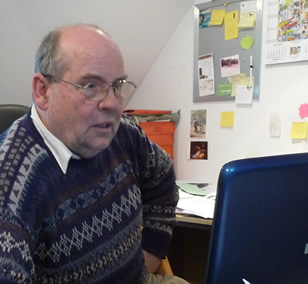 It will be important to involve the equestrians in
the development of suggested horse routes which will need to be well managed
over the long term so as to continue to encourage there use.
H. Interpretation: It is pointless to spend money on interpretation that
is so squewed to one aspect that the dominant tenement of HDC's management
powers is lost.
It will be important to involve the equestrians in
the development of suggested horse routes which will need to be well managed
over the long term so as to continue to encourage there use.
H. Interpretation: It is pointless to spend money on interpretation that
is so squewed to one aspect that the dominant tenement of HDC's management
powers is lost.
Plan: It is important to make clear that the plan is only a proposal and that there is still a lot of detail to be worked out. Connection with the rights of way network and countryside highways should not be forgotten. The red horse route should really say managed horse route.
The issue of cycling on the common is one that has not been addressed and should be right from the beginning as this is potentially an area of substantial conflict with those by right users.
Bob Milton
Acting as Common land adviser and North Hampshire District Access and
Bridleways Officer
For the British Horse Society



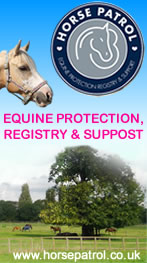
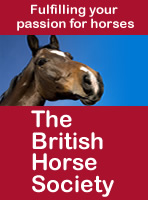
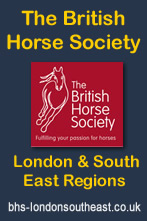


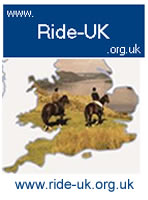
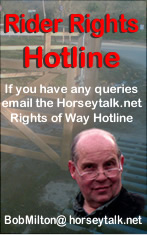
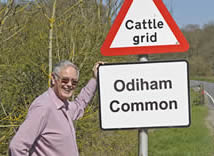 Please send us your views
Please send us your views